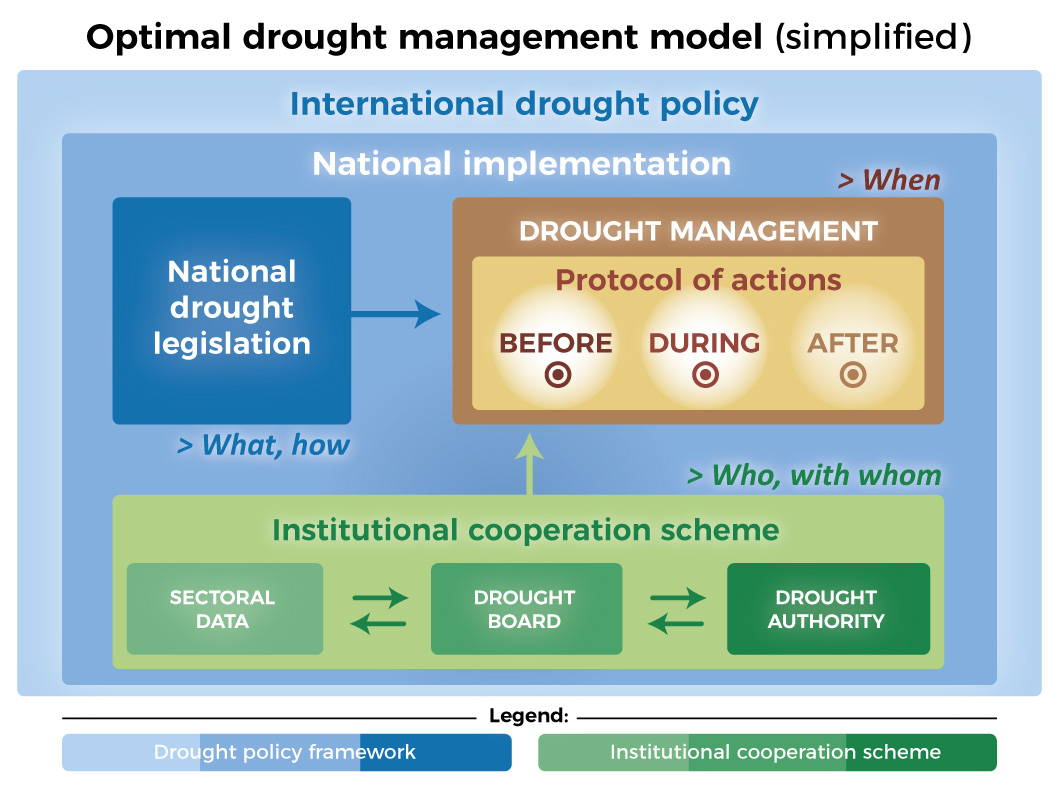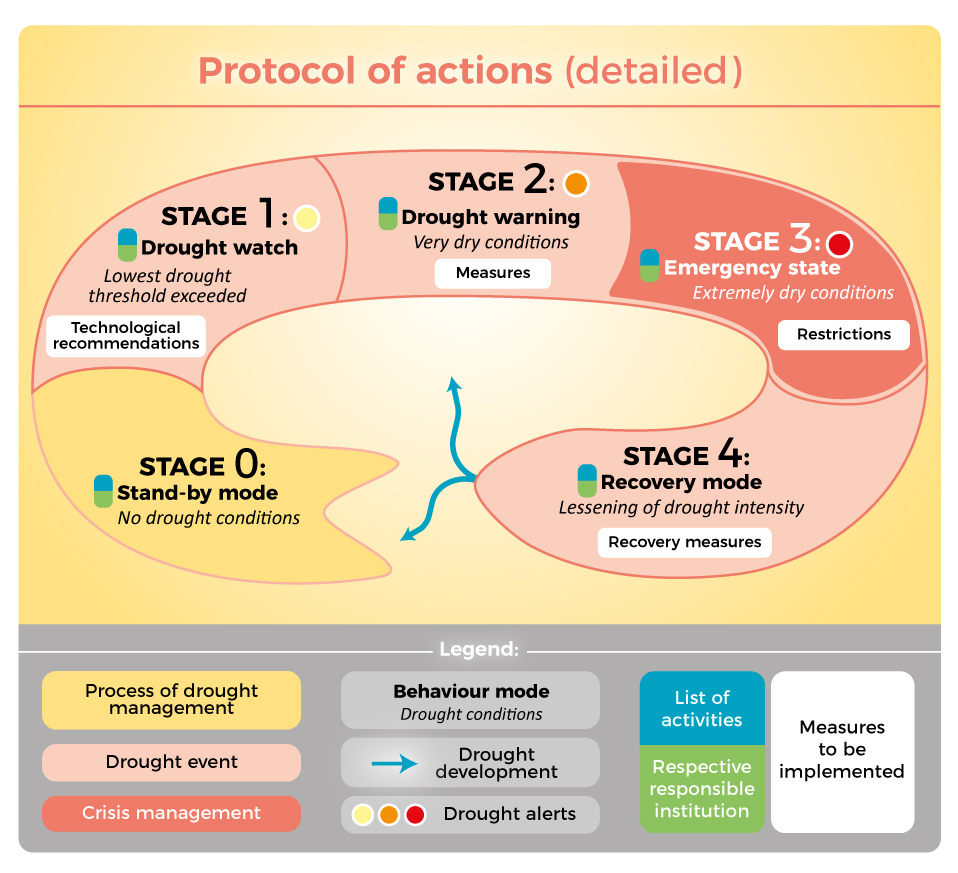Danube Drought strategy is a proposal of a new framework for improved drought management in the Danube region. This is the final outcome of the DriDanube project (Drought Risk in the Danube Region) funded by Danube Transnational Program ERDF, IPA. The main goal is to build the capacity of the Danube region to overcome common deficiencies in coping with drought, and thus help switch from reactive to proactive drought management approach. The key point of the strategy is to identify the common steps that were used to launch the proactive drought management. With this information, the involved stakeholders will have clear guidance in decision-making processes and can improve drought emergency responses.
Optimal Drought Management Model
Optimal Drought Management Model (ODMM), as an essential feature provides a conceptual scheme to demonstrate how involved stakeholders can work together during each stage of drought, to minimize the environmental damage and to secure vital water supply on national scale. In other words, the model answers the question of who is doing what and when.
ODMM is a tool to strengthen institutional cooperation and support in the decision-making process. Its flexibility allows it to be used in any country, regardless of their current organizational situation.


The Level of Effectiveness
There are many obstacles that need to be accounted for when developing such a large-scale project. Take national characteristics like geographical and climatological aspects for example. Policies, and social arrangements also play important role. For ODMM to work, national dialog in each country needs to be established during which the specific details will be discussed.
To strengthen the model's operational capabilities, partners came up with three proactive-focused activities:
-
Review of existing drought management status in the country, with a focus on weaknesses.
-
Identification of groups at risk and preparation of the database of key stakeholders.
-
Nominating responsible national level bodies to organize the whole process.
Support tools
DriDanube project developed several tools that support implementation of proactive drought management in the countries of the Danube region:
-
Drought Watch: an open interactive web application for various end-users, such as drought experts, water managers or even farmers. Designed to predict drought conditions and help make appropriate decisions.
-
National Reporting Networks: predominantly consists of farmers and technicians who weekly report their observations on the state of soil, vegetation or local loss of yield, thus ensuring an operational drought impact assessment and early damage awareness.
-
Unified drought risk assessment: informative drought risk maps, prepared with a harmonized approach, enabling comparative information of a drought occurrence risk. The assessment recognizes the areas prone to rainfall deficit, drought hazard or crop loss.
The way forward
Danube Drought Strategy consists of two goals:
-
To introduce a concept of institutional setting for comprehensive drought management, which would initiate an efficient and proactive drought risk reduction (before, during) and mitigation response (after drought).
-
To encourage proactive actions in the region through the adoption of the drought management concept proposed by the Strategy, and to develop and implement national schemes.
Drought as a very complex phenomenon requires a delicate approach through early detection and exact definition of responsibilities in every stage to figure out what to do, how, when and with whom. A firm political will, clear assignment of responsibilities, and utilization of tools developed by DriDanube are essential for a complex proactive drought response.
The project was funded by Danube Transnational Programme (European Union funds ERDF, IPA).
Find all details about the DriDanube Project here.
Read more about IDMP CEE here.